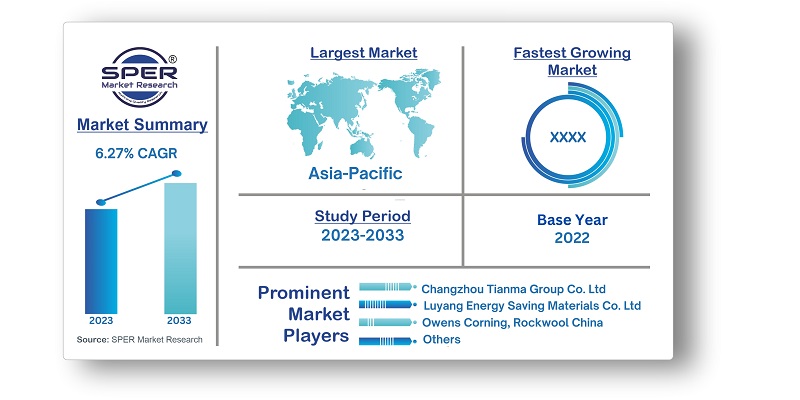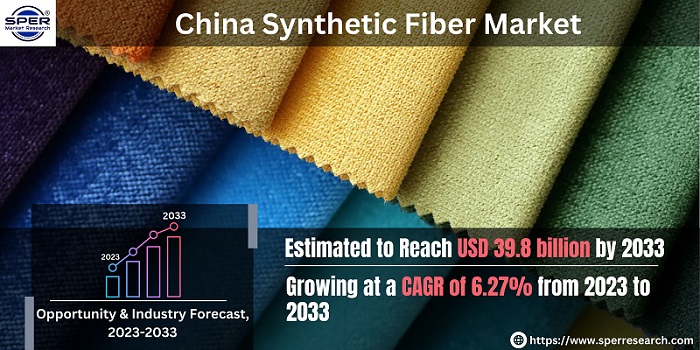
China Synthetic Fiber Market Growth, Size, Trends, Revenue, Challenges and Future Competition
China Synthetic Fiber Market Size- By Fiber Type, By Application- Regional Outlook, Competitive Strategies and Segment Forecast to 2033
| Published: May-2023 | Report ID: CHEM2366 | Pages: 1 - 102 | Formats*: |
| Category : Chemical & Materials | |||


| Report Metric | Details |
| Market size available for years | 2019-2033 |
| Base year considered | 2022 |
| Forecast period | 2023-2033 |
| Segments covered | By Fiber Type, By Application |
| Regions covered | Central China, East China, North China, Northeast China, Northwest China, Southwest China |
| Companies Covered | Changzhou Tianma Group Co. Ltd., China Jushi Co. Ltd., Foshan Rayson Non-Woven Co. Ltd., Hebei Yuniu Fiberglass Manufacturing Co., Ltd., Jia He Taizhou Fiber Co. Ltd., Luyang Energy Saving Materials Co. Ltd., Owens Corning, Rockwool China, Shuhai Huali Advanced Material Co. Ltd., Toray Fibers Co. Ltd. |
- Academics and Researchers
- Investors and Financial Analysts
- Manufacturers and Suppliers
- Policy-makers and Government Officials
- Traders and Distributors
- China Synthetic Fiber Market Value Share and Forecast, By Fiber Type, 2023-2033
- Fiberglass
- Mineral Wool
- Polymer non-woven
- Others
- China Synthetic Fiber Market Value Share and Forecast, By Application, 2023-2033
- Apparel
- Appliances
- Automotive
- Building & Construction
- Home Décor
- Central China
- East China
- North China
- Northeast China
- Northwest China
- Southwest China
- China Synthetic Fiber Market Size (FY’2023-FY’2033)
- Overview of China Synthetic Fiber Market
- Segmentation of China Synthetic Fiber Market By Fiber Type (Fiberglass, Mineral Wool, Polymer non-woven, Others)
- Segmentation of China Synthetic Fiber Market By Application (Apparel, Appliances, Automotive, Building & Construction, Home Decor, Others)
- Statistical Snap of China Synthetic Fiber Market
- Growth Analysis of China Synthetic Fiber Market
- Problems and Challenges in China Synthetic Fiber Market
- Competitive Landscape in the China Synthetic Fiber Market
- Impact of COVID-19 and Demonetization on China Synthetic Fiber Market
- Details on Recent Investment in China Synthetic Fiber Market
- Competitive Analysis of China Synthetic Fiber Market
- Key Players in the China Synthetic Fiber Market
- SWOT Analysis of China Synthetic Fiber Market
- China Synthetic Fiber Market Future Outlook and Projections (FY’2023-FY’2033)
- Recommendations from Analyst
1.1. Scope of the report1.2. Market segment analysis
2.1. Research data source2.1.1. Secondary Data2.1.2. Primary Data2.1.3. SPER’s internal database2.1.4. Premium insight from KOL’s2.2. Market size estimation2.2.1. Top-down and Bottom-up approach2.3. Data triangulation
4.1. Driver, Restraint, Opportunity and Challenges analysis4.1.1. Drivers4.1.2. Restraints4.1.3. Opportunities4.1.4. Challenges4.2. COVID-19 Impacts of the China Synthetic Fiber Market
5.1. SWOT Analysis5.1.1. Strengths5.1.2. Weaknesses5.1.3. Opportunities5.1.4. Threats5.2. PESTEL Analysis5.2.1. Political Landscape5.2.2. Economic Landscape5.2.3. Social Landscape5.2.4. Technological Landscape5.2.5. Environmental Landscape5.2.6. Legal Landscape5.3. PORTER’s Five Forces5.3.1. Bargaining power of suppliers5.3.2. Bargaining power of buyers5.3.3. Threat of Substitute5.3.4. Threat of new entrant5.3.5. Competitive rivalry5.4. Heat Map Analysis
6.1. China Synthetic Fiber Market Manufacturing Base Distribution, Sales Area, Product Type6.2. Mergers & Acquisitions, Partnerships, Product Launch, and Collaboration in China Synthetic Fiber Market
7.1. China Synthetic Fiber Market Value Share and Forecast, By Fiber Type, 2023-20337.2. Fiberglass7.3. Mineral Wool7.4. Polymer non-woven7.5. Others
8.1. China Synthetic Fiber Market Value Share and Forecast, By Application, 2023-20338.2. Apparel8.3. Appliances8.3.1. Dishwashers8.3.2. Dryers8.3.3. Large Cooking Appliances8.3.4. Water Heater8.3.5. Others8.4. Automotive8.5. Building & Construction8.6. Home Décor8.7. Others
9.1. China Synthetic Fiber Market Size and Market Share
10.1. China Synthetic Fiber Market Size and Market Share by Fiber Type (2019-2026)10.2. China Synthetic Fiber Market Size and Market Share by Fiber Type (2027-2033)
11.1. China Synthetic Fiber Market Size and Market Share by Application (2019-2026)11.2. China Synthetic Fiber Market Size and Market Share by Application (2027-2033)
12.1. China Synthetic Fiber Market Size and Market Share by Region (2019-2026)12.2. China Synthetic Fiber Market Size and Market Share by Region (2027-2033)12.3. Central China12.4. East China12.5. North China12.6. Northeast China12.7. Northwest China12.8. Southwest China
13.1. Changzhou Tianma Group Co. Ltd.13.1.1. Company details13.1.2. Financial outlook13.1.3. Product summary13.1.4. Recent developments13.2. China Jushi Co. Ltd.13.2.1. Company details13.2.2. Financial outlook13.2.3. Product summary13.2.4. Recent developments13.3. Foshan Rayson Non-Woven Co. Ltd.13.3.1. Company details13.3.2. Financial outlook13.3.3. Product summary13.3.4. Recent developments13.4. Hebei Yuniu Fiberglass Manufacturing Co., Ltd.13.4.1. Company details13.4.2. Financial outlook13.4.3. Product summary13.4.4. Recent developments13.5. Jia He Taizhou Fiber Co. Ltd.13.5.1. Company details13.5.2. Financial outlook13.5.3. Product summary13.5.4. Recent developments13.6. Luyang Energy Saving Materials Co. Ltd.13.6.1. Company details13.6.2. Financial outlook13.6.3. Product summary13.6.4. Recent developments13.7. Owens Corning13.7.1. Company details13.7.2. Financial outlook13.7.3. Product summary13.7.4. Recent developments13.8. Rockwool China13.8.1. Company details13.8.2. Financial outlook13.8.3. Product summary13.8.4. Recent developments13.9. Shuhai Huali Advanced Material Co. Ltd.13.9.1. Company details13.9.2. Financial outlook13.9.3. Product summary13.9.4. Recent developments13.10. Toray Fibers Co. Ltd.13.10.1. Company details13.10.2. Financial outlook13.10.3. Product summary13.10.4. Recent developments
SPER Market Research’s methodology uses great emphasis on primary research to ensure that the market intelligence insights are up to date, reliable and accurate. Primary interviews are done with players involved in each phase of a supply chain to analyze the market forecasting. The secondary research method is used to help you fully understand how the future markets and the spending patterns look likes.
The report is based on in-depth qualitative and quantitative analysis of the Product Market. The quantitative analysis involves the application of various projection and sampling techniques. The qualitative analysis involves primary interviews, surveys, and vendor briefings. The data gathered as a result of these processes are validated through experts opinion. Our research methodology entails an ideal mixture of primary and secondary initiatives.



Frequently Asked Questions About This Report
PLACE AN ORDER
Year End Discount
Sample Report
Pre-Purchase Inquiry
NEED CUSTOMIZATION?
Request CustomizationCALL OR EMAIL US
100% Secure Payment






Related Reports
Our Global Clients
Our data-driven insights have influenced the strategy of 200+ reputed companies across the globe.




















